Last year, I was pulling my hair out trying to figure out why our client retention strategies were bombing across different industries. We’d done the usual suspects – surveys, focus groups, the works – but we kept hitting the same wall. The feedback was surface-level at best, and honestly, pretty useless for making real changes. That’s when my research partner Sarah suggested we try a different approach entirely: strategic case study design. I’ll admit, I was skeptical at first.
But here’s the thing – according to Statistics by Jim, case studies are particularly valuable for deeply understanding a subject in its real-life context, revealing insights into the dynamics of situations and offering a ground for testing theories. That statistic hit different when I was actually living the problem. Traditional research methods were giving us what people thought we wanted to hear, but case studies? They showed us what was actually happening behind closed doors.
Three months later, we’d uncovered retention patterns we never would’ve found otherwise. Turns out, the industries weren’t the differentiating factor – it was the onboarding experience, and it varied wildly based on company size, not sector. That breakthrough came from diving deep into five specific client relationships instead of surveying hundreds superficially.
Over the past five years of doing this work, I’ve stumbled across, experimented with, and sometimes accidentally discovered 25 different case study approaches. Some worked brilliantly, others… well, let’s just say they taught me valuable lessons about what not to do. Here’s everything I’ve learned about choosing the right design for your specific situation.
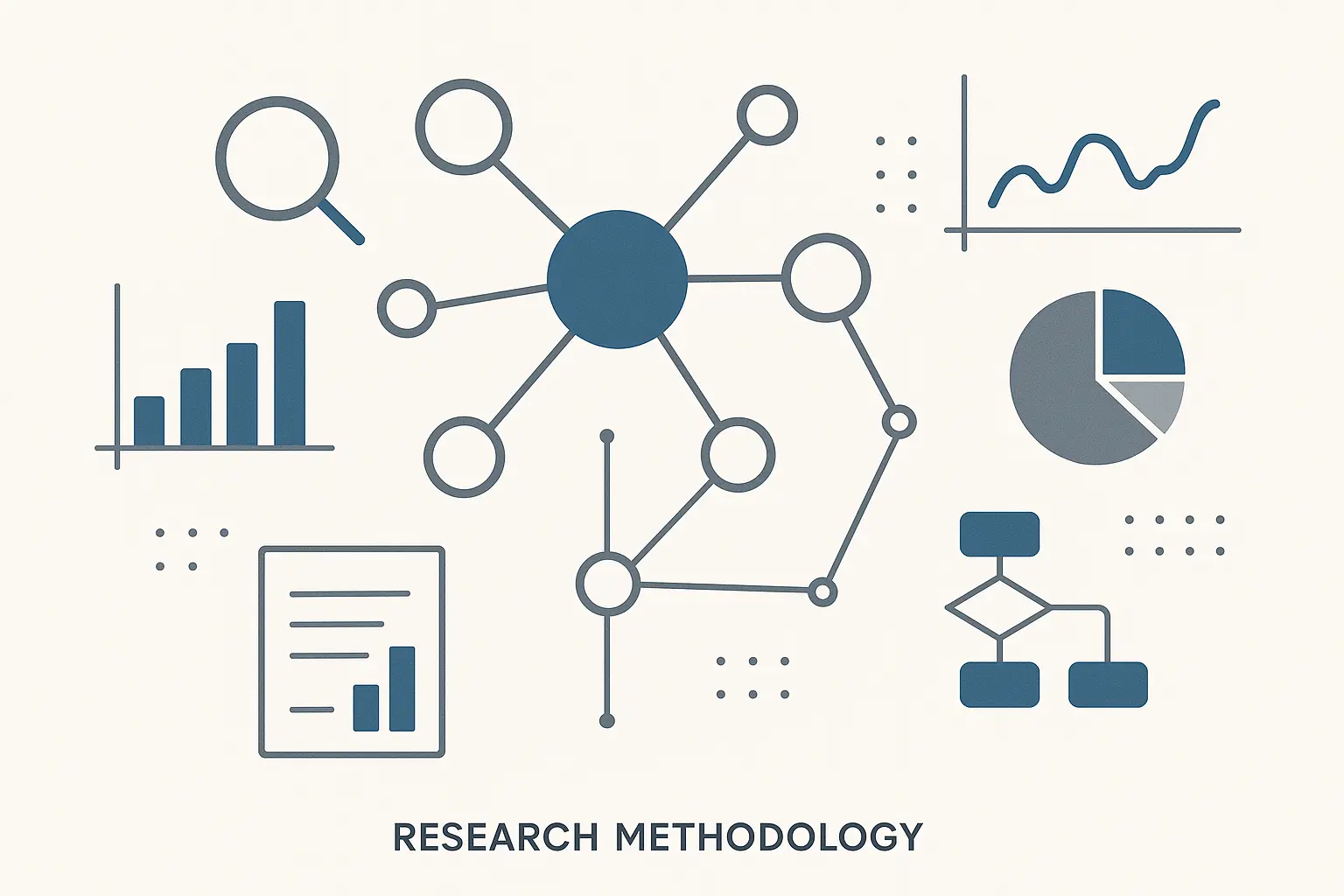
Table of Contents
- TL;DR: Key Takeaways
- What Makes Case Study Design Selection Critical
- Structural Designs: Building Your Foundation
- Temporal Designs: Mastering the Time Element
- Analytical Approaches: Finding Your Focus
- Participant-Focused Designs: Putting People First
- Methodological Innovations: Embracing New Approaches
- Specialized Applications: Advanced Techniques
- How to Choose the Right Design for Your Needs
- Final Thoughts
TL;DR: Key Takeaways
- Case study design selection isn’t about finding the “perfect” approach – it’s about matching your constraints to what you can actually deliver
- The 25 designs I’ve tested fall into six messy categories that often overlap: structural, temporal, analytical, participant-focused, methodological innovations, and specialized applications
- Single case studies give you incredible depth but zero generalizability – perfect when you’re studying something truly unique
- Longitudinal designs will eat your life for months but capture change like nothing else can
- Mixed-methods approaches sound fancy but they’re just combining numbers with stories – harder to execute but worth it for complex questions
- Digital designs became essential during COVID and stayed relevant because they’re often more honest than face-to-face interviews
- Most successful projects I’ve seen combine elements from multiple approaches rather than sticking rigidly to one methodology
What Makes Case Study Design Selection Critical
Look, choosing a case study design isn’t as clean as the textbooks make it seem. Usually, I start with what I can actually pull off – how much time do I have, who will talk to me, what’s my budget looking like? Then I work backwards to figure out what questions I can realistically answer. Sometimes the “perfect” design for your research question is the one that’ll take two years and $50K you don’t have.
I learned this the hard way during my second year doing consulting work. I pitched this elaborate multiple case study to a client, promising insights across eight different companies. Sounds impressive, right? Six months in, I’d burned through 80% of the budget, had data from only three companies, and the client was asking pointed questions about deliverables. That’s when I realized that impressive-sounding methodology means nothing if you can’t execute it properly.
Understanding advanced analytics for strategic growth becomes crucial when you’re trying to match your research design to actual business needs rather than academic ideals.
Research Objectives Drive Everything (But Be Honest About Them)
Here’s what I’ve learned the hard way about matching objectives to designs. When we were trying to understand why three of our SaaS clients had completely different churn patterns despite similar products, we needed explanatory research. But when I was documenting how a local restaurant survived COVID (just out of curiosity), that was pure intrinsic case study territory.
The problem is, most people aren’t honest about what they really want to know. They say they want to “explore customer satisfaction” when what they actually mean is “prove our new process is working.” Or they claim they need “comprehensive market analysis” when they’re really asking “should we pivot or not?”
I started asking clients to complete this sentence: “At the end of this study, I need to be able to…” That usually cuts through the BS pretty quickly. If they can’t finish that sentence clearly, we’re not ready to pick a methodology.
When someone asks what is a case study, the answer depends entirely on what you’re trying to accomplish. Are you exploring uncharted territory? That calls for flexible, iterative approaches. Documenting current conditions? You need systematic coverage. Trying to prove causation? Better have multiple data sources and solid analysis methods. Evaluating whether something worked? You need clear success metrics defined upfront.
| Research Reality | What You Actually Need | Design That Works | What Usually Goes Wrong |
|---|---|---|---|
| “Is our new strategy working?” | Evaluative with clear metrics | Before/after comparison | Assuming correlation equals causation |
| “Why did this campaign succeed?” | Explanatory with process focus | Single case, multiple data sources | Not accounting for external factors |
| “What’s happening in this market?” | Exploratory with flexibility | Multiple cases, iterative approach | Trying to boil the ocean |
| “How do our competitors do this?” | Comparative with standardized protocols | Systematic comparison | Not controlling for key variables |
Resource Constraints Shape Reality (And That’s Okay)
Time is usually the killer. I’ve seen brilliant research designs collapse because nobody factored in how long it actually takes to schedule interviews with busy executives. Or how participant dropout affects longitudinal studies. Or how long transcription and analysis actually take when you’re doing it properly.
Budget constraints aren’t just about money – they’re about trade-offs. More cases mean less depth per case. Longer timeframes mean higher costs but better insights. Specialized expertise costs more but prevents costly mistakes. I learned to always build in a 30% buffer for unexpected complications, because there are always unexpected complications.
Access to participants often becomes the deciding factor, and this is where relationships matter more than methodology. I can design the most elegant comparative study in the world, but if I can’t get consistent access to the right people across multiple organizations, it’s worthless. Sometimes the “inferior” design that you can actually execute beats the “perfect” design that exists only on paper.
Proper budget planning is essential, and our marketing budget calculator can help you allocate resources effectively for comprehensive case study research.
Methodological Requirements Define Success (But Don’t Let Perfect Be the Enemy of Good)
Generalizability is the big trade-off that everyone struggles with. Single case studies give you incredible depth but limited applicability. Multiple case studies provide broader insights but at much higher resource costs. I’ve seen researchers torture single cases trying to make them generalizable, and I’ve seen others spread resources so thin across multiple cases that they end up with superficial insights everywhere.
The validity question keeps me up at night sometimes. Internal validity – are your conclusions accurate for your specific case? External validity – do your findings apply beyond your immediate study? You’re always making trade-offs between these two, and the right balance depends on how you plan to use the findings.
I learned to be upfront about limitations from the start. “This study of how Company X handled their digital transformation will give us deep insights into their specific process, but we can’t assume other companies should follow the same approach.” That honesty actually builds credibility rather than undermining it.
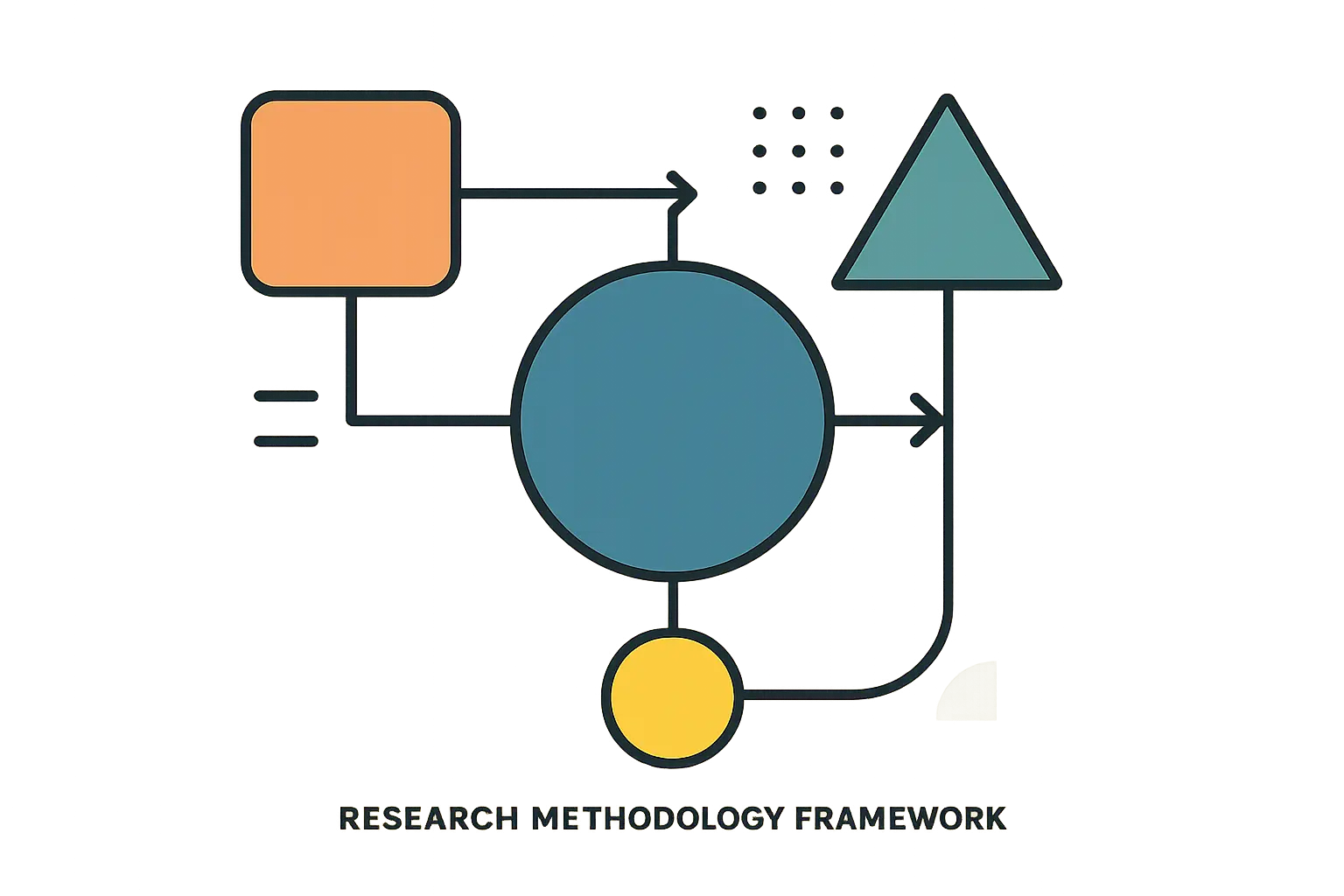
Structural Designs: Building Your Foundation
Structural designs are where you decide how many cases you’re biting off and what you’re fundamentally trying to accomplish. I think of these as the foundation – you’ve got to get this right because everything else builds on top of it.
The beauty of structural approaches is their clarity. You know exactly what you’re committing to from the start, which makes resource planning much more straightforward. The downside? You’re locked into that commitment even when you discover something more interesting halfway through.
1. Single Case Study Design
I remember spending three months obsessing over how this tiny local bakery managed to triple their revenue during the pandemic while everyone else was struggling. I literally camped out there (well, bought way too many croissants) and talked to the owner, employees, suppliers, even regular customers. What I found wasn’t some genius marketing strategy – it was actually a series of small, weird decisions that somehow worked perfectly together. That’s the beauty of single case studies – you catch the stuff that would get lost in a broader analysis.
Single case studies put all your eggs in one basket, but sometimes that’s exactly what you need. When you’re dealing with something truly unique or when you need to understand every nuance of a complex situation, nothing beats the depth you can achieve by focusing all your resources on one case.
The bakery study taught me that single cases excel when you’re dealing with extreme or unusual situations. This wasn’t just any bakery – it was one that somehow thrived during a crisis that killed most of its competitors. Trying to study “pandemic business survival” across multiple bakeries would’ve missed the specific combination of factors that made this one special.
Resource requirements stay manageable since you’re not spreading efforts across multiple sites. But here’s the catch – you’re completely dependent on that one case. If your key contact leaves the company, or if you discover major data quality issues, you’re in trouble. I always have a backup plan now.
The trade-off? Limited generalizability. Your insights might be profound but specific to your chosen case. This works perfectly for unique or extreme cases where broad applicability isn’t the goal, but it’s frustrating when clients want to apply your findings everywhere.
2. Multiple Case Study Design
Multiple case studies are where things get expensive fast, but they solve the generalizability problem by demonstrating pattern replication across different contexts. I learned this during a project examining customer onboarding processes across five different SaaS companies.
The pattern that emerged was fascinating – successful onboarding wasn’t about the specific tools or processes, but about consistent communication timing. Every successful company had touchpoints at days 1, 3, 7, and 14, regardless of their industry or customer base. I never would’ve seen that pattern from a single case.
You select cases based on theoretical sampling – not random sampling like in quantitative research, but purposeful selection based on what you’re trying to understand. Then you conduct parallel investigations using identical protocols, followed by cross-case analysis to identify themes.
Resource requirements jump substantially. You’re essentially conducting several single case studies simultaneously, which means multiple data collection sites, more travel (or video calls), more interviews, and exponentially more analysis time. But the payoff in terms of robust findings often justifies the investment.
The coordination challenges are real. Keeping five different case studies on track, managing multiple sets of stakeholders, and maintaining consistent data collection protocols across different organizational contexts – it’s like herding cats, but with more spreadsheets.
3. Collective Case Study Design
Collective case studies take a slightly different approach than multiple case studies. Instead of looking for identical patterns across cases, you’re studying multiple cases to understand a broader phenomenon comprehensively. Think of it as building a complete picture rather than testing a theory.
I used this approach when studying how different types of small businesses adapted to remote work during COVID. I wasn’t looking for the same patterns across a law firm, a graphic design agency, and a consulting practice – I was building a comprehensive understanding of how “professional services” as a category handled the transition.
Each case contributed different pieces to the overall puzzle. The law firm showed how client confidentiality concerns shaped technology choices. The design agency revealed how creative collaboration evolved. The consulting practice demonstrated how client relationships adapted. Together, they painted a complete picture of the sector’s transformation.
Resource requirements fall somewhere between single and multiple case studies, depending on your case selection strategy. The design works particularly well for industry or sector-wide investigations where you need both depth and breadth, but you’re not necessarily testing specific hypotheses.
4. Instrumental Case Study Design
The case itself isn’t your primary interest in instrumental designs – it’s an instrument to examine larger questions. I discovered this accidentally while studying a family-owned manufacturing company that had successfully transitioned from second to third-generation leadership.
What started as interest in their specific succession process became a vehicle for understanding broader questions about organizational culture transmission and change management. The family business was fascinating, but it was really a lens for examining how values and practices survive leadership transitions.
This design requires strategic thinking about case selection. Your chosen case needs to effectively represent or challenge existing theory. Data collection focuses on aspects most relevant to the theoretical framework you’re exploring, which can feel limiting but actually provides helpful focus.
The approach offers a good balance of practical insights and theoretical contribution. You’re not just describing what happened, but using what happened to advance understanding of broader concepts. Resource requirements stay moderate since your data collection has clear focus rather than trying to capture everything.
5. Intrinsic Case Study Design
Sometimes a case deserves study simply because it’s fascinating, unusual, or historically significant. Intrinsic case studies investigate cases for their own inherent interest and unique characteristics, and honestly, these are often the most fun to conduct.
I fell into this approach when I encountered a 100-year-old family business that had survived the Great Depression, two world wars, multiple recessions, and now COVID-19. The case was inherently interesting – I wanted to understand their unique sustainability practices and cultural preservation methods because they were remarkable in their own right, not because they proved any particular theory.
This design works perfectly for descriptive and exploratory research. You have flexibility since you’re not constrained by theoretical frameworks or comparison requirements. Resource requirements vary depending on case complexity, but you can adapt your approach based on what you discover.
The challenge is staying focused. When everything about your case is interesting, it’s easy to chase every rabbit trail and lose sight of what you’re actually trying to document. I learned to set boundaries even in intrinsic studies – interesting doesn’t mean infinitely expandable.
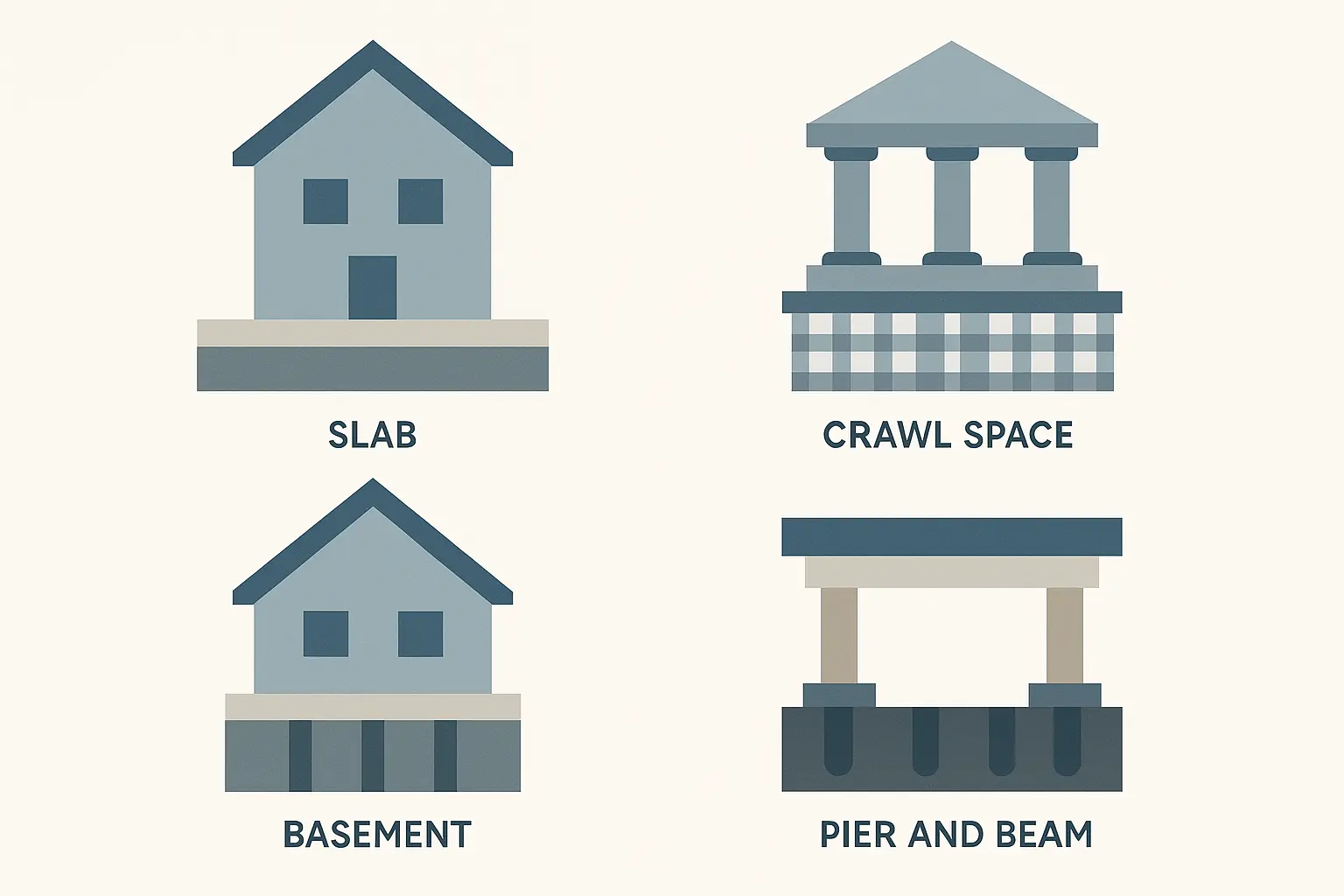
Temporal Designs: Mastering the Time Element
Time is either your best friend or your worst enemy in case study research. I’ve learned that rushing temporal research usually backfires spectacularly, but I’ve also seen researchers get so caught up in the “perfect” timeline that they never actually finish their studies.
These five approaches each handle time differently, and your choice here often determines whether your project succeeds or becomes a cautionary tale about scope creep.
6. Longitudinal Case Study Design
Fair warning: longitudinal studies will eat your life. I’m talking months, sometimes years of check-ins, follow-ups, and trying to keep people engaged when they’ve moved on to other priorities. I once tracked a startup’s pivot process for 18 months, and by month 12, half my original contacts had left the company.
But here’s the thing – watching that transformation happen in real-time gave me insights I never could have gotten from interviews after the fact. I saw the actual decision points, the moments of doubt, the external pressures that influenced choices. The CEO’s post-hoc story about their “strategic pivot” was completely different from the messy reality I witnessed.
Longitudinal case studies track changes and developments within cases over extended periods through multiple data collection points. You establish baseline measurements and follow predetermined schedules for subsequent data gathering, which sounds simple until you try to coordinate it across busy organizations.
Challenges include participant attrition (people leave, priorities change), changing contexts (market conditions shift, new competitors emerge), and maintaining consistent measurement approaches when you’re learning and adapting your methods. But for understanding causation and development processes, nothing beats longitudinal design.
The resource requirements are brutal – high time investment, multiple data collection points, and the psychological challenge of staying motivated on a project that stretches across years. But for studying organizational change, policy impacts, or developmental processes, it’s often the only way to get real answers.
7. Cross-Sectional Case Study Design
Cross-sectional designs are the sprint version of case study research – you capture snapshots at specific points in time and analyze the hell out of them. I used this approach when studying digital transformation status across ten manufacturing companies in Q4 2021, right when supply chain issues were forcing rapid technology adoption.
By capturing that single point-in-time snapshot during a moment of crisis, I documented immediate organizational responses, technology deployments, and employee adaptation strategies without waiting to see how everything played out long-term. Sometimes you need insights now, not in two years.
A consulting firm I worked with used cross-sectional design to study remote work adoption across 12 Fortune 500 companies during March 2020. The timing was perfect – everyone was scrambling to figure out work-from-home policies, and capturing that moment of uncertainty provided crucial insights into crisis management that a longitudinal study would’ve missed in the noise of later adaptations.
Resource requirements stay lower with concentrated data collection periods. You can gather substantial amounts of data relatively quickly since you’re not waiting for changes to occur over time. The coordination is simpler too – you’re not trying to maintain relationships and schedules across extended periods.
The limitation? Causal inference becomes much more difficult. You can describe current states and make comparisons, but understanding how things got that way requires different approaches. Still, for current state assessments and comparative studies, cross-sectional designs work beautifully and won’t destroy your sanity.
8. Retrospective Case Study Design
The biggest pain with retrospective studies? People’s memories are garbage. Not their fault – it’s just how brains work. I learned to always ask for emails, Slack conversations, meeting notes, anything with actual timestamps. One CEO swore their product pivot happened “sometime in Q2,” but their internal emails showed it was actually a six-month process that started in January. Always triangulate, always.
Retrospective case studies examine past events using historical data and participant recollections. This becomes valuable when real-time observation wasn’t possible or when studying historical phenomena, but it requires serious detective work to piece together what actually happened.
Key challenges include memory bias (people remember what they want to remember), incomplete records (who keeps meeting notes from three years ago?), and post-hoc rationalization (everyone’s a genius in hindsight). I’ve had participants completely rewrite history to make themselves look better, usually without even realizing they were doing it.
Success requires triangulation of multiple data sources and careful validation of historical accounts. You need documents, multiple perspectives, and external verification wherever possible. I spend way more time fact-checking retrospective studies than any other type, but it’s essential for credibility.
Despite the challenges, retrospective designs offer the only way to study many important phenomena. Sometimes the interesting stuff happened before you knew it was interesting, and retrospective analysis is your only option.
9. Prospective Case Study Design
Prospective designs follow cases forward from defined starting points to observe outcomes as they unfold. I used this approach to follow a startup from seed funding through Series A, documenting every pivot, hiring decision, and strategic choice as they happened.
This approach eliminates recall bias completely and captures real-time dynamics that retrospective studies miss. You see decisions being made under uncertainty, reactions occurring in real-time, and consequences developing without the filter of hindsight. The authenticity is unmatched.
But the resource requirements are brutal. You need to maintain contact with participants, track developments, and collect data consistently over extended periods. I had to set calendar reminders to check in with my startup every two weeks for eight months, and there were definitely periods where I wondered if anything interesting would ever happen.
The psychological challenge is real too. You’re investing months or years in something that might not produce the insights you hoped for. My startup study almost got boring in month six when they hit a stable growth period, but then they nearly ran out of cash in month seven and the real drama began.
For studying new initiatives, interventions, or emerging phenomena, prospective designs provide unmatched authenticity. Just be prepared for the long haul and build strong relationships with your participants – you’ll need their patience.
10. Sequential Case Study Design
I accidentally discovered sequential design during what started as a single case study of a restaurant’s COVID adaptation. The insights were so interesting that I found a second restaurant that had made different choices, then a third that had tried something completely different. Each subsequent case was selected based on what I learned from the previous ones.
Sequential case studies examine cases in predetermined sequences, with each subsequent case selected based on insights from previous cases. This creates a learning progression that allows for theoretical refinement and hypothesis testing as you go.
You might modify data collection protocols based on emerging findings, making this approach particularly suitable for theory development. The sequential nature enables both replication and extension of findings across cases, which is incredibly powerful for building robust understanding.
Resource requirements fall in the moderate to high range, but you have flexibility in resource allocation. You can invest more heavily in later cases based on what you learn from earlier ones, or you can stop early if you reach theoretical saturation.
This works ideally when initial understanding is limited and theory development is your primary goal. It’s also great for building confidence in your findings through progressive validation across multiple contexts.

Analytical Approaches: Finding Your Focus
Your analytical lens shapes everything from data collection to final conclusions. I’ve found that researchers who skip this step often end up with mountains of data but no clear direction for analysis. It’s like having all the ingredients for a meal but no recipe – you might end up with something edible, but it probably won’t be what you intended.
These five approaches represent fundamentally different ways of thinking about your case, and getting this choice right determines whether your analysis feels coherent or scattered.
11. Explanatory Case Study Design
Explanatory designs are where I cut my teeth on serious case study work, and they’ll humble you quickly if you’re not prepared. You’re not just describing what happened – you’re explaining why it happened and how different factors contributed to outcomes. The standards for evidence are much higher.
I learned this during a study of why one marketing campaign generated 300% ROI while a nearly identical campaign for a similar client barely broke even. The surface-level differences were minimal, but the explanatory analysis revealed that timing, competitive context, and internal stakeholder buy-in created completely different conditions for success.
Explanatory case study design focuses on understanding causal relationships and mechanisms by developing theoretical propositions before data collection and using multiple data sources to test these propositions through logic models and process tracing.
The design often employs logic models, process tracing, and pattern matching to establish causation. You develop hypotheses about how X leads to Y, then systematically collect evidence to test those propositions. It’s more structured than exploratory research but requires more rigor than descriptive approaches.
Resource requirements are high due to the need for comprehensive data collection from multiple sources. You need interviews, documents, observations, and often quantitative data to build convincing causal arguments. But for understanding complex interventions and their outcomes, explanatory designs provide unmatched rigor.
12. Descriptive Case Study Design
Descriptive studies are underrated. Everyone wants to jump straight to explanation, but sometimes you need to thoroughly document what’s actually happening before you can explain why it’s happening. I spent four months documenting the complete customer journey experience at a luxury hotel, from booking through post-stay follow-up, and discovered service gaps that everyone assumed didn’t exist.
Descriptive case studies provide comprehensive documentation of phenomena within their natural context, serving as foundations for future research while requiring thorough data collection focused on complete understanding.
This approach works perfectly for new or poorly understood phenomena. You’re building the foundation that future research can build upon. The goal is thorough documentation and understanding rather than explanation or evaluation, which gives you freedom to capture everything without forcing premature conclusions.
Resource requirements are moderate, focused on thorough data collection rather than complex analysis. You need comprehensive coverage of your phenomenon, but you’re not necessarily looking for causal relationships or making comparisons. The challenge is knowing when you’ve captured enough detail without drowning in data.
13. Exploratory Case Study Design
I love exploratory studies because they give you permission to follow interesting leads wherever they go. I started what I thought would be a simple study of how small businesses use social media and ended up discovering an entire underground economy of local business collaboration that nobody was talking about publicly.
Exploratory case studies investigate new or poorly understood phenomena with flexible, iterative approaches that emphasize openness to unexpected findings and evolving research questions as insights emerge.
The design emphasizes flexibility and openness to unexpected findings. You might start with broad questions like “How do family businesses handle succession?” and narrow your focus as patterns emerge. Analysis focuses on identifying themes and potential relationships that can inform future research.
Resource requirements vary with flexibility for iterative data collection. You might need to adjust your approach multiple times as you learn more about your phenomenon, which can be frustrating for clients who want predictable timelines but essential for genuine discovery.
When people ask what are case studies in exploratory contexts, the answer becomes more fluid. You’re discovering the boundaries and characteristics of your subject as you investigate, which means your methodology evolves along with your understanding.
14. Evaluative Case Study Design
Working with marketing agencies taught me that evaluative case studies are gold for client retention. Nothing shuts down a “but what’s our ROI?” conversation like pulling out a detailed case study showing exactly how your strategy moved the needle. I’ve seen agencies win contract renewals just by documenting their work properly.
Evaluative case studies assess the effectiveness, efficiency, or impact of programs, policies, or interventions, requiring clear evaluation criteria and measurement approaches while providing essential feedback for improvement and accountability.
You might evaluate a corporate wellness program by examining implementation processes, employee participation, health outcomes, and cost-benefit ratios. The key is establishing clear success criteria before you start collecting data – otherwise you’re just describing what happened without any framework for judging whether it worked.
When evaluating marketing program effectiveness, tools like our marketing ROI calculator can help establish clear measurement criteria for your case study analysis.
Resource requirements range from moderate to high depending on evaluation scope. Complex programs require extensive data collection and analysis, but the investment pays off in actionable insights for program improvement and stakeholder accountability.
15. Comparative Case Study Design
Comparative designs are where methodology gets really important because you’re making systematic comparisons across cases. I learned this the hard way during a study comparing customer service approaches across three different industries. My data collection protocols weren’t standardized enough, and I ended up with fascinating insights that I couldn’t compare directly.
Comparative case studies systematically compare two or more cases using identical protocols to identify similarities, differences, and patterns, enhancing generalizability through systematic comparison while requiring substantial resources.
You select cases that vary on key dimensions while controlling for other factors, then use identical data collection protocols. The design can identify which factors are associated with different outcomes and under what conditions certain patterns occur.
Resource requirements are high due to multiple case requirements and rigorous comparison needs. You’re essentially conducting multiple case studies with the added complexity of maintaining consistency across different contexts. But for understanding variation in outcomes or testing theories about what drives success, comparative designs provide exceptional insights.
| Design Type | Primary Purpose | What Success Looks Like | What Usually Goes Wrong | Resource Reality |
|---|---|---|---|---|
| Explanatory | Understand causation | Clear causal story with evidence | Assuming correlation equals causation | High – need multiple data sources |
| Descriptive | Document phenomena | Comprehensive, accurate picture | Getting lost in details | Moderate – focused data collection |
| Exploratory | Generate insights | New theories or frameworks | Lack of focus, scope creep | Variable – depends on discoveries |
| Evaluative | Assess effectiveness | Clear judgment on success/failure | Unclear success criteria | Moderate to high – depends on scope |
| Comparative | Identify patterns | Systematic differences explained | Inconsistent data collection | High – multiple cases plus comparison |

Participant-Focused Designs: Putting People First
These designs recognize that research subjects are actually research partners, and that shift in perspective fundamentally changes how you collect data and interpret findings. I learned this during a study where participants kept correcting my assumptions and offering insights I never would have thought to ask about.
The biggest difference with participant-focused approaches is that you’re not just extracting information from people – you’re collaborating with them to understand their reality. It’s messier but often more accurate.
16. Participatory Case Study Design
I stumbled into participatory research during what was supposed to be a traditional evaluation of a nonprofit’s community development program. The participants kept asking “but what do you think we should do differently?” and before I knew it, they were designing interview questions and analyzing data alongside me.
Participatory case studies involve participants as co-researchers in the investigation process, empowering stakeholders and ensuring research addresses real concerns while requiring participant training and collaborative analysis sessions.
This approach empowers stakeholders and ensures research addresses their actual concerns rather than what you think their concerns should be. You often need to train participants
This approach empowers stakeholders and ensures research addresses their actual concerns rather than what you think their concerns should be. You often need to train participants in basic research methods and create collaborative analysis sessions where everyone contributes to interpretation.
The validity improvements are remarkable – when participants are involved in analysis, they catch misinterpretations and add context that external researchers miss. But it requires letting go of control over the research process, which can be uncomfortable if you’re used to traditional approaches.
Resource requirements include participant training time and more complex coordination, but the enhanced validity through stakeholder involvement often justifies the investment. This works ideally for organizational development and community research where buy-in matters as much as insights.
17. Ethnographic Case Study Design
I spent six months embedded with a remote software development team to understand their collaboration patterns, and it was simultaneously the most exhausting and insightful research I’ve ever done. You can’t fake ethnographic work – you either commit to really understanding the culture or you don’t do it at all.
Ethnographic case studies combine case study methodology with ethnographic approaches for deep cultural understanding, requiring extended field presence to capture collaboration patterns, communication styles, and cultural norms that participants can’t easily articulate.
This approach provides unmatched insights into culture and social dynamics. You’re not just asking people about their experiences – you’re living them alongside participants and observing behaviors in their natural context. The stuff you see is often completely different from what people tell you in interviews.
Resource requirements are high due to extended field presence requirements. You need significant time investment and strong tolerance for ambiguity. There’s also the challenge of potential researcher bias – when you’re embedded that deeply, maintaining analytical distance becomes difficult.
But for understanding organizational culture, team dynamics, and social phenomena, ethnographic designs provide depth that other approaches can’t match. Just be prepared for the emotional and psychological demands of deep immersion.
18. Phenomenological Case Study Design
Phenomenological designs focus on understanding the lived experiences and meanings that participants attach to phenomena within your case context. I used this approach to understand how entrepreneurs experience the emotional roller coaster of startup life, and the insights were completely different from what business literature typically captures.
Phenomenological case studies explore how individuals experience and make sense of specific phenomena through in-depth interviews and personal accounts, focusing on essential structures of experience and meaning-making processes within case contexts.
Data collection emphasizes in-depth interviews, observation, and personal accounts. You’re not looking for external behaviors or outcomes, but for the internal experience of being part of your case. Analysis focuses on identifying how people make sense of their experiences.
Resource requirements are moderate, with emphasis on qualitative data collection and analysis. The design provides deep insights into human experience and perception, making it ideal for studying personal experiences within organizational or social contexts.
The challenge is maintaining focus on experience rather than drifting into description of events. You’re interested in how people interpret and make meaning from what happens to them, not just what happens.
19. Narrative Case Study Design
I remember analyzing how Southwest Airlines’ founding story of “democratizing air travel” shaped employee behavior across different departments and decades. What started as curiosity about corporate storytelling revealed how narrative consistency drove operational decisions and cultural cohesion across 60,000+ employees.
Narrative case studies focus on stories and narratives that emerge from and shape cases, examining how founding stories influence corporate culture and decision-making processes through story collection and analysis across organizational levels.
This approach involves collecting and analyzing stories told by different stakeholders at various levels within your case. You’re interested in how narratives create meaning, transmit culture, and influence behavior rather than just documenting what happened.
The insights often surprise people. I’ve found that the stories organizations tell about themselves shape their decisions more than their official policies or procedures. Understanding those narratives gives you predictive power about how they’ll handle future challenges.
Resource requirements are moderate, with focus on story collection and analysis. The design provides rich insights into meaning-making and cultural transmission, making it suitable for understanding organizational identity and culture evolution.
20. Collaborative Case Study Design
Collaborative designs involve multiple researchers or research teams working together on case investigation. I’ve done this with academic partners, where their theoretical expertise combined with my practical experience created insights neither of us could have generated alone.
Collaborative case studies involve multiple researchers or research teams working together on case investigation, bringing together diverse expertise and perspectives while requiring strong coordination protocols and substantial resources for complex phenomena.
The design brings together researchers with different expertise, perspectives, or institutional affiliations. It enhances validity through multiple perspectives and can address complex cases requiring diverse skills – like combining marketing expertise with organizational psychology insights.
Resource requirements are high due to coordination needs and multiple researcher involvement. Success requires strong communication protocols and clear role definitions. But for complex, multifaceted cases requiring diverse expertise, collaborative designs provide comprehensive coverage that single researchers can’t match.
The coordination challenges are real – scheduling meetings across different institutions, reconciling different analytical approaches, and managing authorship questions. But the intellectual stimulation and quality of insights often make it worthwhile.
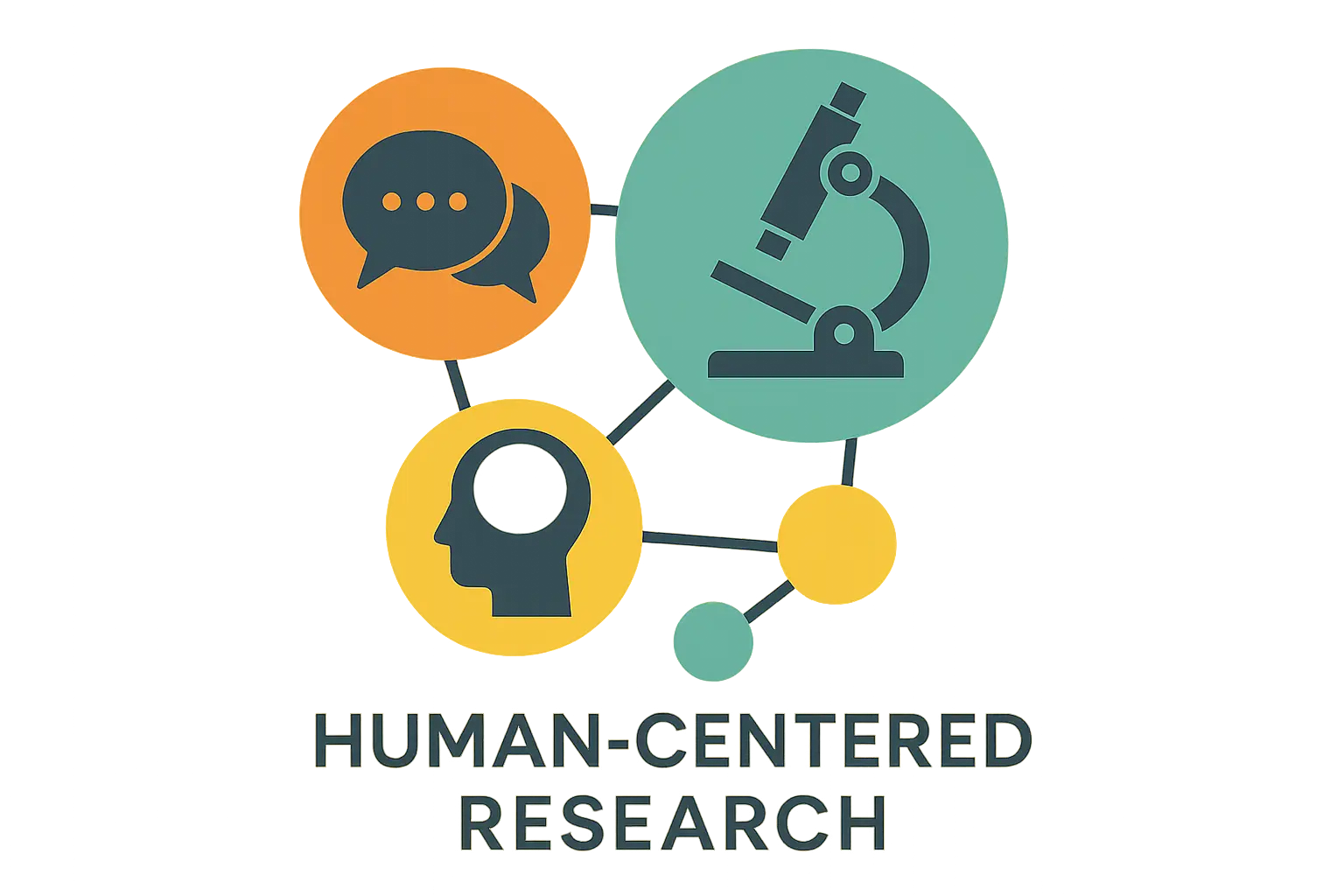
Methodological Innovations: Embracing New Approaches
Innovation in methodology often comes from necessity. The pandemic forced many of us to rethink traditional approaches, and some of these adaptations turned out to be improvements rather than compromises. I’ve found that the most interesting insights often come from combining approaches that weren’t designed to work together.
These methodological innovations represent case study research: design and methods evolution in response to changing technology, global circumstances, and our growing understanding of what actually produces reliable insights.
21. Mixed-Methods Case Study Design
Mixed-methods sounds fancy, but it’s really just combining numbers with stories to get a more complete picture. I used this approach to evaluate a client’s customer retention program, combining survey data on satisfaction scores with in-depth interviews about actual customer experiences. The numbers showed high satisfaction, but the stories revealed frustration with specific touchpoints that the surveys missed completely.
Mixed-methods case studies integrate quantitative and qualitative data collection and analysis methods, combining numerical precision with qualitative depth through methodological triangulation to provide comprehensive understanding and enhanced validity.
You collect both numerical data (surveys, performance metrics, financial data) and qualitative data (interviews, observations, documents) to provide comprehensive understanding. The integration happens at multiple levels – data collection, analysis, and interpretation – which can get complex but produces robust insights.
The biggest challenge is timing and sequencing. Do you collect quantitative data first to inform qualitative questions, or start with qualitative insights to shape quantitative measures? I’ve learned that the answer depends on what you already know about your phenomenon.
Resource requirements are high due to multiple data collection and analysis methods, plus you need expertise in both quantitative and qualitative approaches. But the enhanced validity through methodological triangulation makes this approach particularly powerful for evaluation and explanatory research.
22. Digital Case Study Design
Digital designs became essential during COVID and stayed relevant because they often capture more honest behavior than face-to-face methods. I studied a brand’s crisis management strategy by analyzing social media sentiment, website behavior patterns, and customer service chat logs – data I never could have accessed through traditional interviews.
Digital case studies leverage digital technologies and data sources for case investigation, using social media analytics, website behavior tracking, and digital communication patterns to understand online phenomena and behaviors with real-time, unobtrusive data access.
This approach provides access to behavioral data rather than reported behavior, which eliminates a lot of bias. People tell you they visit your website twice a week, but the analytics show they actually check it daily. They say they’re satisfied with customer service, but their chat transcripts reveal frustration.
Understanding digital analytics becomes crucial for this approach, and our guide on GA4 audit methodology provides valuable insights for digital case study data collection.
Resource requirements range from moderate to high depending on technology requirements and data access permissions. The design works perfectly for digital transformation studies, online behavior analysis, and understanding how digital channels actually perform versus how people think they perform.
23. Virtual Case Study Design
Virtual designs conduct case study research entirely through digital platforms and remote methods. I initially resisted this approach, thinking you’d lose the nuance of in-person interaction, but I was wrong. Some participants are actually more open in virtual settings, especially when discussing sensitive topics.
Virtual case studies conduct research entirely through digital platforms and remote methods, using video conferencing and online tools while requiring careful attention to technology logistics and modified rapport-building techniques for geographically dispersed cases.
This approach became essential during the pandemic but remains valuable for geographically dispersed cases or when physical presence is impractical. You can access participants anywhere in the world without travel costs, and scheduling becomes much more flexible.
The technology challenges are real – dealing with connection issues, ensuring all participants can use the tools effectively, and maintaining engagement through screens. I learned to always have backup communication methods and to keep virtual sessions shorter than in-person equivalents.
Resource requirements show lower travel costs but higher technology requirements and more time spent on coordination. Success requires participant comfort with digital tools and modified rapport-building techniques, but the accessibility benefits often outweigh the challenges.
24. Real-Time Case Study Design
Real-time designs capture and analyze data as events unfold, eliminating recall bias completely. I followed a company’s merger announcement in real-time, tracking employee Slack conversations, stock price movements, and media coverage as they happened. The immediate reactions were completely different from what people remembered a month later.
Real-time case studies capture and analyze data as events unfold, providing immediate insights while eliminating recall bias through constant monitoring and rapid analysis, though requiring substantial resources for time-sensitive phenomena.
This approach provides unmatched authenticity – you see decisions being made under pressure, genuine reactions without the filter of hindsight, and the messy reality of how things actually happen versus how they get remembered later.
The resource requirements are brutal because you need constant monitoring and rapid analysis capabilities. During the merger study, I was checking data sources every few hours for three weeks straight. But for crisis situations, major changes, or time-sensitive phenomena, real-time designs capture truth that other approaches miss.
The psychological demands are high too – you’re essentially on call for the duration of your study period. But the insights you get from capturing authentic, unfiltered responses make it worthwhile for the right research questions.

Specialized Applications: Advanced Techniques
25. Action Research Case Study Design
I accidentally stumbled into action research during what was supposed to be a simple evaluation study of a client’s customer onboarding process. The client kept asking “but what should we DO about this?” and before I knew it, I was helping them implement changes while documenting the process. Turns out, some of the best insights come when you’re not just observing from the sidelines.
Action research case study design combines case study investigation with action-oriented interventions to solve practical problems while generating research insights through cyclical processes of diagnosis, planning, implementation, and evaluation with strong practitioner-researcher partnerships.
The process is cyclical: diagnose the problem, plan interventions, implement changes, evaluate results, and refine based on what you learn. You serve as both investigator and change agent, which creates unique insights into how change actually happens versus how it’s supposed to happen.
Resource requirements are high due to active involvement in change processes, and you need strong relationships with practitioners who trust you enough to let you tinker with their operations. Success requires careful documentation of both processes and outcomes, which can be challenging when you’re in the middle of active problem-solving.
But for organizational development, process improvement, and situations where you need both insights and solutions, action research provides unmatched practical value. The clients love it because they get actionable improvements, not just reports.

How to Choose the Right Design for Your Needs
Here’s what I wish someone had told me when I started: good case study design isn’t about following rules perfectly – it’s about being honest about what you can deliver and then delivering it really, really well. I’d rather see a simple, well-executed single case study than an overly ambitious multiple case disaster that falls apart halfway through.
The most effective approach often involves combining elements from multiple designs rather than sticking rigidly to one methodology. You might use a mixed-methods approach within a longitudinal framework while incorporating participatory elements. The key is making conscious choices about each element rather than defaulting to what you’ve done before.
Start by getting brutally honest about your constraints. How much time do you actually have? Not how much time you’d like to have, but how much time you can realistically commit given everything else on your plate. What’s your real budget, including hidden costs like transcription, travel, and your own time? Who will actually talk to you, and how much of their time can you reasonably expect?
Next, clarify what you actually need to know. Not what would be nice to know, but what you absolutely must understand to make the decisions or recommendations that depend on this research. I make clients complete this sentence: “At the end of this study, I need to be able to…” If they can’t finish that sentence clearly, we’re not ready to pick a methodology.
When planning your research approach, understanding market sizing methodologies can inform your case selection strategy and help you think about scope decisions more systematically.
Consider your audience and how they’ll use the findings. Academic audiences want different things than business clients. Internal stakeholders have different credibility requirements than external ones. Board presentations need different evidence than operational recommendations.
| Reality Check | Honest Questions | Design Implications | What This Actually Means |
|---|---|---|---|
| Time Constraints | How long until you need results? | Single vs. multiple cases | Six months = single case max |
| Budget Reality | What can you actually spend? | Scope and depth trade-offs | Low budget = narrow focus |
| Access Limitations | Who will really talk to you? | Participant-focused approaches | Limited access = work with what you have |
| Expertise Level | What can you actually execute? | Methodological complexity | New to this = start simple |
| Stakeholder Needs | What will they actually use? | Analysis depth and presentation | Busy executives = clear conclusions |
For marketing agencies and business consultants, certain designs offer particular advantages that I’ve learned through trial and error. Evaluative case studies can document campaign effectiveness and ROI in ways that resonate with clients who are tired of vanity metrics. Mixed-methods approaches combine performance data with client satisfaction insights, giving you both the numbers and the story.
Comparative designs can demonstrate superior performance against industry benchmarks, but only if you have access to comparable cases and can control for key variables. I learned this the hard way when trying to show that our approach worked better than competitors without accounting for differences in client size and industry.
Understanding how to write a case study becomes much clearer once you’ve selected your design approach. The methodology drives the structure, data collection methods, and analysis techniques. But
Understanding how to write a case study becomes much clearer once you’ve selected your design approach. The methodology drives the structure, data collection methods, and analysis techniques. But don’t get so caught up in methodology that you forget to tell a compelling story with your findings.
Our experience with comprehensive case studies demonstrates how proper methodology selection transforms client relationships and business outcomes. When you can show concrete evidence of performance rather than making promises, everything changes.
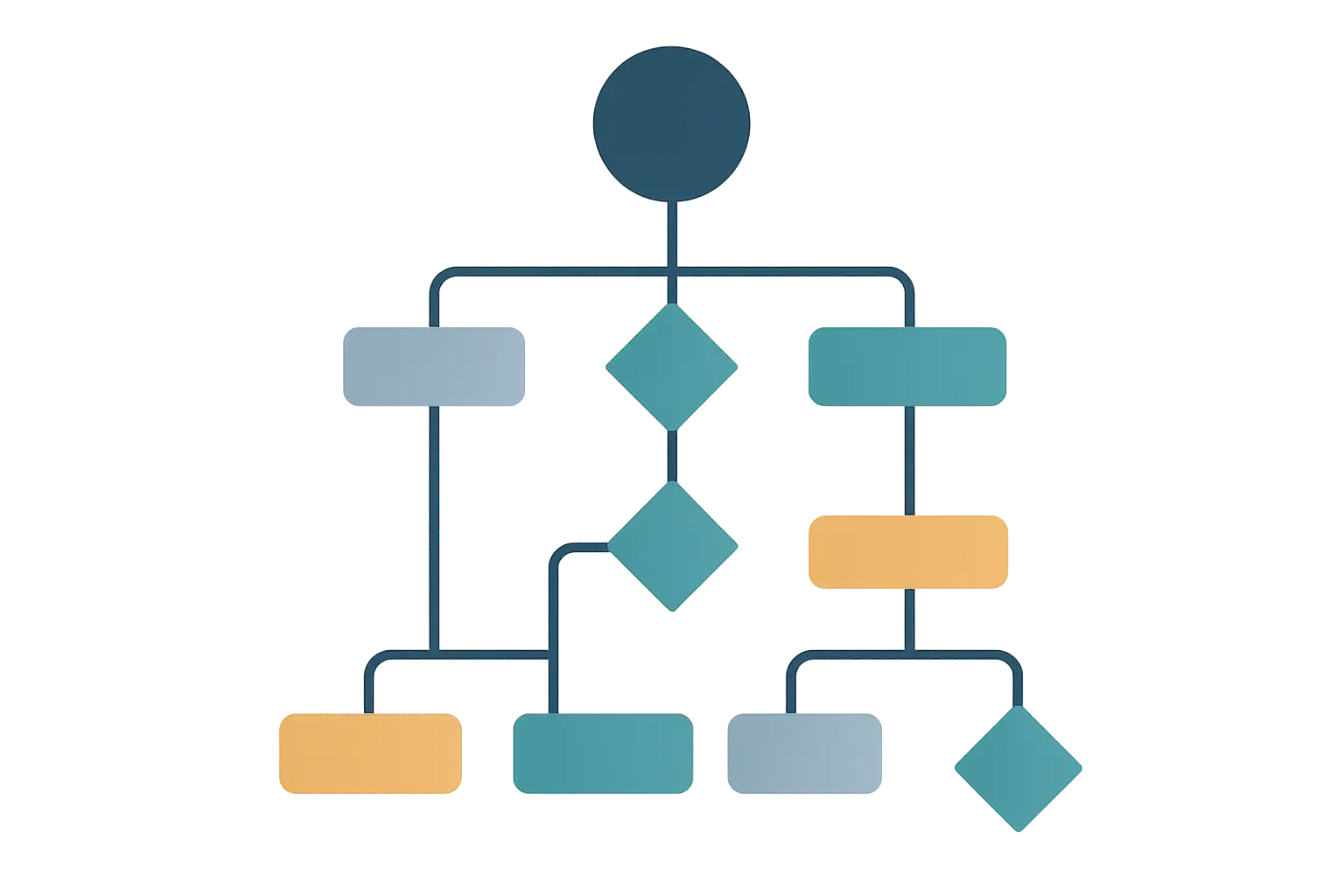
Final Thoughts
The 25 case study designs I’ve shared here represent five years of experimentation, mistakes, breakthroughs, and gradual learning about what actually works in real-world research situations. Some of these approaches I discovered by accident, others I learned from spectacular failures, and a few I’m still figuring out.
Success isn’t about finding the “perfect” methodology – it’s about matching your design choice to your specific situation and then executing it well enough to produce insights people can actually use. Each of these 25 designs has strengths and limitations, and your job is to match those characteristics to your research needs, resource constraints, and stakeholder expectations.
The investment in proper case study design pays off through enhanced credibility, better insights, and stronger evidence for decision-making. But more importantly, it prevents the frustration of spending months on research that doesn’t answer the questions people actually care about.
Whether you’re documenting marketing campaign effectiveness, understanding organizational change, or exploring new market opportunities, the right design transforms your investigation from educated guessing into systematic inquiry. The difference shows up in the quality of your insights, the confidence of your recommendations, and the impact of your work.
At The Marketing Agency, we’ve seen how rigorous case study methodologies transform client relationships and business outcomes. Our scientific approach to market analysis leverages many of these designs to demonstrate ROI and refine data-driven strategies. When you can show concrete evidence of performance rather than making promises, client relationships strengthen and business development accelerates.
If you’re feeling overwhelmed by all these options (totally normal), or if you’ve got a specific research challenge you’re wrestling with, I’d love to help you think through the methodology decisions. It’s like solving puzzles, but with real business impact. Contact us to discuss how proper case study methodology can strengthen your decision-making and demonstrate clear value to your stakeholders.



